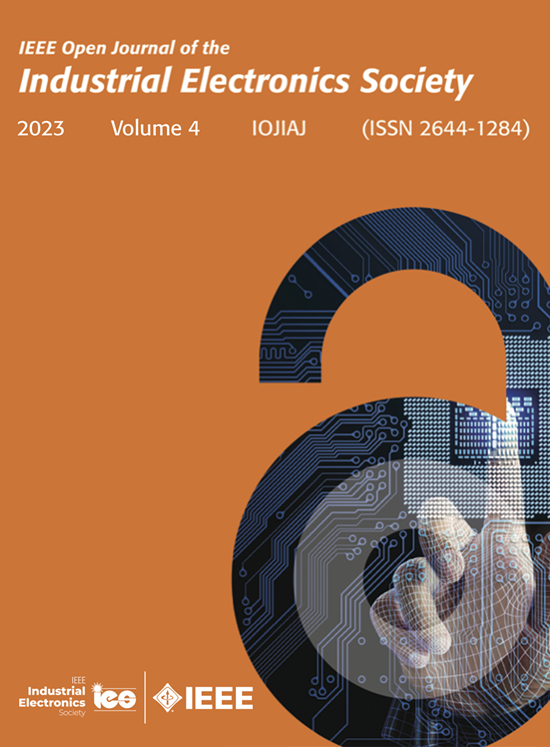基于同构的不匹配光伏阵列快速仿真
IF 4.3
Q1 ENGINEERING, ELECTRICAL & ELECTRONIC
IEEE Open Journal of the Industrial Electronics Society
Pub Date : 2025-07-03
DOI:10.1109/OJIES.2025.3585749
引用次数: 0
摘要
在光伏阵列中,特别是在城市装置或通常被称为农业光伏的装置中,经常发生不匹配的操作条件。不匹配不仅是由于部分遮阳,还包括模块的施工公差和安装错误,维护操作,老化对模块的不同影响,以及模块表面灰尘,污染和雪的不均匀分布。从电站设计到基于模型的控制,从监测和诊断到数字孪生的实现,许多应用都需要在不匹配条件下运行的光伏阵列的仿真。一些应用程序不仅需要极端的粒度级别(即使是单个单元或部分单元),而且还需要与运行在嵌入式处理器上的实时应用程序兼容的非常快的计算。本文介绍了一种基于同构的不匹配光伏阵列模拟新方法。该方法利用阵列的子部分之间的相似性来最小化非线性方程建模的数量。仿真精度要求越低,需要求解的方程组的秩就越小。本文中提出的应用示例,涉及受白天变化的附近物体部分遮阳影响的光伏阵列和由半切割模块组成的故障光伏场,允许人们将模型复杂性的降低和由此产生的计算时间量化为模拟结果所需精度的函数。本文章由计算机程序翻译,如有差异,请以英文原文为准。
Isomorphism-Based Fast Simulation of Mismatched Photovoltaic Arrays
Mismatched operating conditions occur very frequently in photovoltaic arrays, especially in urban installations or those that are commonly referred to as agrivoltaic. Mismatches are not only due to partial shading, but also to modules’ construction tolerances and installation mistakes, to maintenance operations, to a different effect of aging on modules, to an uneven distribution of dust, pollution, and snow on the module surfaces. The simulation of photovoltaic arrays operating in mismatched conditions is required in many applications, from plant design to model-based control, from monitoring and diagnosis up to the implementation of a digital twin. Some applications require not only an extreme granularity level (even at the single cell or fractions of it) but also a very fast computation compatible with real-time applications, running on embedded processors. This article introduces a new approach to the simulation of mismatched photovoltaic arrays based on isomorphism. The approach exploits similarities among subsections of the array to minimize the number of nonlinear equations modeling it. The lower the simulation accuracy required, the smaller the rank of the system of equations to solve. The application examples proposed in the article, concerning a PV array affected by a partial shading by nearby objects that changes during the day and a faulty PV field made up of half-cut modules, allow one to quantify the reduction in model complexity and the consequent computation time granted by the proposed technique as a function of the desired accuracy of the simulation results.
求助全文
通过发布文献求助,成功后即可免费获取论文全文。
去求助
来源期刊

IEEE Open Journal of the Industrial Electronics Society
ENGINEERING, ELECTRICAL & ELECTRONIC-
CiteScore
10.80
自引率
2.40%
发文量
33
审稿时长
12 weeks
期刊介绍:
The IEEE Open Journal of the Industrial Electronics Society is dedicated to advancing information-intensive, knowledge-based automation, and digitalization, aiming to enhance various industrial and infrastructural ecosystems including energy, mobility, health, and home/building infrastructure. Encompassing a range of techniques leveraging data and information acquisition, analysis, manipulation, and distribution, the journal strives to achieve greater flexibility, efficiency, effectiveness, reliability, and security within digitalized and networked environments.
Our scope provides a platform for discourse and dissemination of the latest developments in numerous research and innovation areas. These include electrical components and systems, smart grids, industrial cyber-physical systems, motion control, robotics and mechatronics, sensors and actuators, factory and building communication and automation, industrial digitalization, flexible and reconfigurable manufacturing, assistant systems, industrial applications of artificial intelligence and data science, as well as the implementation of machine learning, artificial neural networks, and fuzzy logic. Additionally, we explore human factors in digitalized and networked ecosystems. Join us in exploring and shaping the future of industrial electronics and digitalization.
 求助内容:
求助内容: 应助结果提醒方式:
应助结果提醒方式:


